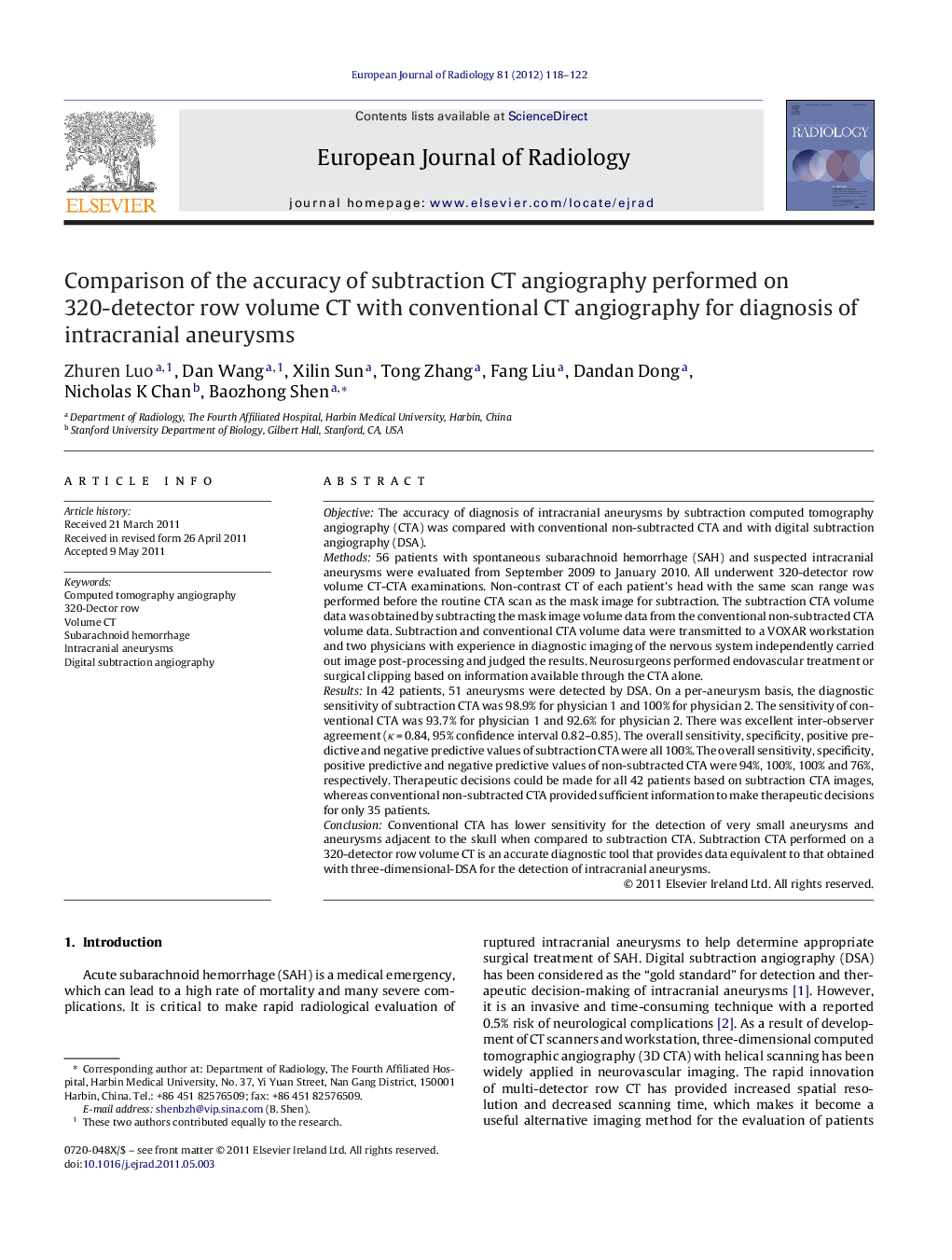| Article ID | Journal | Published Year | Pages | File Type |
|---|---|---|---|---|
| 4226280 | European Journal of Radiology | 2012 | 5 Pages |
ObjectiveThe accuracy of diagnosis of intracranial aneurysms by subtraction computed tomography angiography (CTA) was compared with conventional non-subtracted CTA and with digital subtraction angiography (DSA).Methods56 patients with spontaneous subarachnoid hemorrhage (SAH) and suspected intracranial aneurysms were evaluated from September 2009 to January 2010. All underwent 320-detector row volume CT-CTA examinations. Non-contrast CT of each patient's head with the same scan range was performed before the routine CTA scan as the mask image for subtraction. The subtraction CTA volume data was obtained by subtracting the mask image volume data from the conventional non-subtracted CTA volume data. Subtraction and conventional CTA volume data were transmitted to a VOXAR workstation and two physicians with experience in diagnostic imaging of the nervous system independently carried out image post-processing and judged the results. Neurosurgeons performed endovascular treatment or surgical clipping based on information available through the CTA alone.ResultsIn 42 patients, 51 aneurysms were detected by DSA. On a per-aneurysm basis, the diagnostic sensitivity of subtraction CTA was 98.9% for physician 1 and 100% for physician 2. The sensitivity of conventional CTA was 93.7% for physician 1 and 92.6% for physician 2. There was excellent inter-observer agreement (κ = 0.84, 95% confidence interval 0.82–0.85). The overall sensitivity, specificity, positive predictive and negative predictive values of subtraction CTA were all 100%. The overall sensitivity, specificity, positive predictive and negative predictive values of non-subtracted CTA were 94%, 100%, 100% and 76%, respectively. Therapeutic decisions could be made for all 42 patients based on subtraction CTA images, whereas conventional non-subtracted CTA provided sufficient information to make therapeutic decisions for only 35 patients.ConclusionConventional CTA has lower sensitivity for the detection of very small aneurysms and aneurysms adjacent to the skull when compared to subtraction CTA. Subtraction CTA performed on a 320-detector row volume CT is an accurate diagnostic tool that provides data equivalent to that obtained with three-dimensional-DSA for the detection of intracranial aneurysms.
